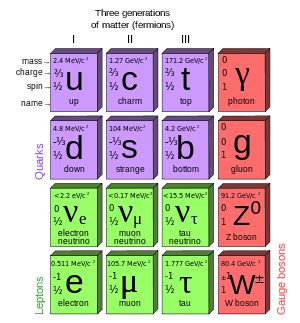

Gell-Mann says that he first came up with the sound "quork", and later chanced upon the phrase "Three quarks for Muster Mark" in James Joyce's Finnegans Wake. But Gell-Mann's model required the existence of three new elementary particles, which he called "quarks." Gell-Mann built upon this work in a new model that could successfully describe – among other things – the magnetic properties of protons and neutrons.

The scheme (for which he received the Nobel prize in physics in 1969) classified the hadrons into two main groups, rather as the Periodic Table classifies the chemical elements. In 1961 Gell-Mann had introduced a symmetry scheme he called the Eightfold Way, which was based on the mathematical symmetry known as SU(3). Murray Gell-Mann visited CERN and the ATLAS experiment in January last year (Image: Maximilien Brice/CERN) Within this framework, they proposed that important properties of the strongly interacting particles – hadrons – could be explained if they were made up of constituent particles. Physicists Murray Gell-Mann and George Zweig were working independently on a theory for strong interaction symmetry in particle physics.

In 1964, two physicists independently proposed the existence of the subatomic particles known as quarks.


 0 kommentar(er)
0 kommentar(er)
